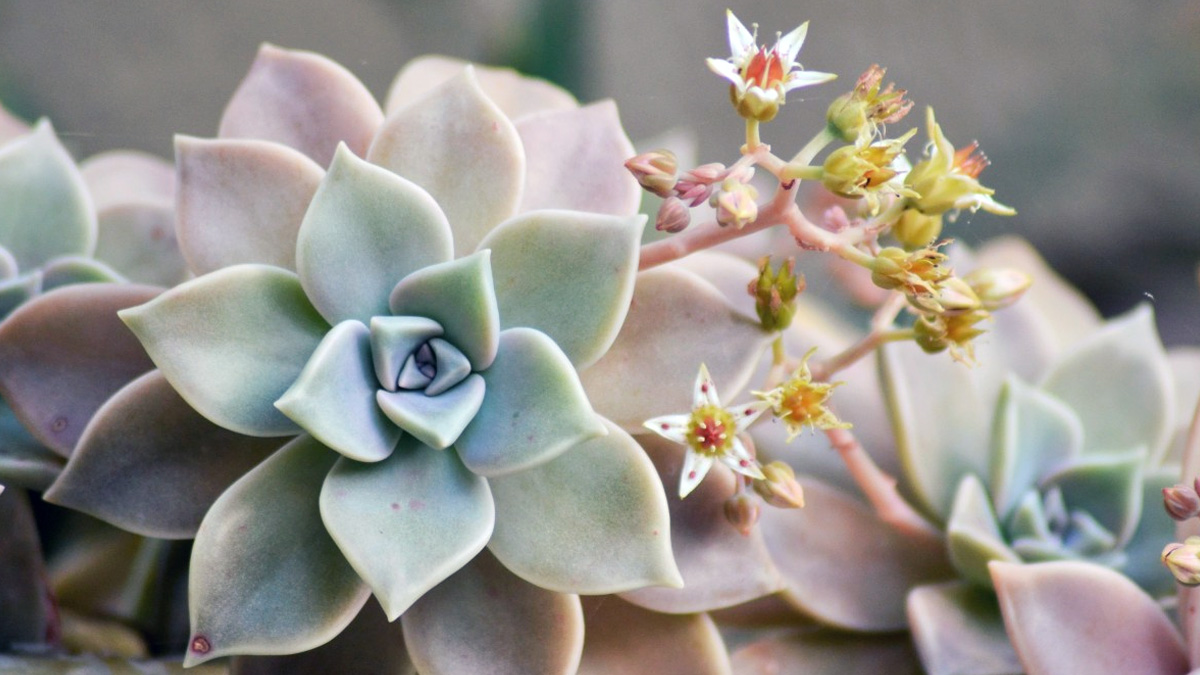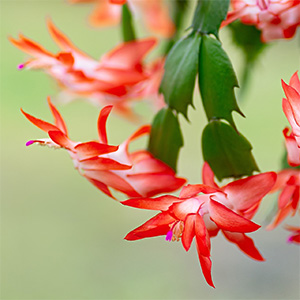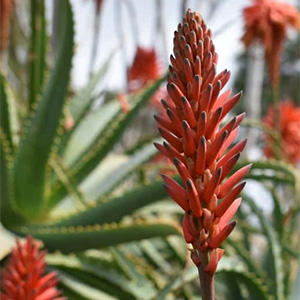You’ll Love These Vibrant Flowering Succulents for Indoors

If you’re looking to add color and character to your indoor space without the high-maintenance routine, flowering succulents are the perfect solution. These low-fuss plants bring vibrant blooms, sculptural shapes, and natural charm to any room. With just a bit of sunlight and simple care, they’ll brighten your home all year long.
Related: Design Your Own Succulent Bowl With These Creative Ideas
Why choose flowering succulents for indoors
Flowering succulents are a perfect blend of beauty and simplicity. They thrive in the dry, bright conditions common in most American homes and offer eye-catching blooms without demanding much attention. Whether you’re styling a small apartment or adding a touch of green to your office, these plants can brighten your space while being low maintenance.
Unlike traditional houseplants, many succulents have a compact growth habit that makes them easy to fit on windowsills, desks, or shelves. Their thick, water-storing leaves allow them to go longer between watering, making them ideal for busy lifestyles. Best of all, many of them flower with vibrant color, adding seasonal interest to your display.
What to consider before bringing them inside
Before choosing your flowering succulents, take a moment to assess your indoor light conditions. Most succulents need bright, indirect light to bloom well. South- or west-facing windows are ideal, but east-facing ones can also work with a little support from grow lights if needed.
Always use pots with proper drainage to help prevent root rot, which is a common issue when succulents are overwatered. Terracotta pots are especially useful because they allow soil to dry out more quickly. Rotate your plants occasionally to help them grow evenly and avoid leaning toward the light.
Top flowering succulents for indoor displays
Kalanchoe (Kalanchoe blossfeldiana)

Kalanchoe is one of the most widely available flowering succulents in the United States. It produces clusters of small, bright flowers in shades of red, pink, yellow, orange, and white. These plants stay compact, making them perfect for tabletops or sunny kitchen windows.
Christmas cactus (Schlumbergera)

Unlike most succulents, the Christmas cactus enjoys slightly more humidity, making it a great choice for bathrooms or kitchens. It puts on a beautiful floral show around the holidays, with blooms in pink, red, or white. These plants grow well in hanging baskets and develop lovely cascading stems.
Crown of thorns (Euphorbia milii)

This plant is tough and colorful, with long-lasting flower bracts that bloom nearly year-round under the right conditions. Its thick stems are lined with thorns, so it’s best kept out of reach of pets and small children. It tolerates dry air well and prefers a sunny window with minimal disturbance.
Echeveria species

Echeverias form neat rosettes that look great alone or in mixed arrangements. In the right conditions, they produce tall flower stalks with bell-shaped blooms in shades of red, yellow, or coral. These succulents are easy to propagate and come in many colors and leaf shapes for added visual interest.
Lithops (Living stones)

These quirky little succulents resemble smooth stones and are a conversation starter in any collection. Their blooms are surprisingly large compared to the size of the plant, often white or yellow and daisy-like in shape. Lithops require plenty of sunlight and careful watering but can thrive on a windowsill with patience.
Aloe species (especially Aloe aristata)

While best known for their medicinal properties, some aloe varieties also flower indoors when given proper care. Aloe aristata, also called lace aloe, produces orange-red flower spikes that attract attention. It’s drought-tolerant and forgiving, perfect for beginners.
Tips for encouraging blooms indoors
Flowering often depends on the right mix of light, temperature, and care. Most succulents bloom in response to seasonal changes, so allowing them cooler nighttime temperatures during winter months can help. Placing them near a bright window during the day while avoiding extreme warmth at night often encourages blooming.
Water deeply but infrequently, and reduce watering during dormant periods. Feed occasionally during the active growing season with a diluted, balanced fertilizer. Avoid overfeeding, as too much nitrogen can lead to leafy growth without flowers.
Styling flowering succulents in your home
Flowering succulents can be styled in creative ways to complement your interior design. Try grouping different types together in a shallow bowl or tray for a colorful, textural mix. Use decorative pots in neutral or earthy tones to make the blooms stand out.
Floating shelves, sunny windowsills, and plant stands all make great display spots. You can rotate plants in and out of bloom to keep your space looking fresh year-round. Combine tall bloomers like aloe with low rosettes like echeveria for visual contrast and balance.
Common issues and how to fix them
If your succulent stops blooming or looks stretched and pale, it’s likely not getting enough light. Move it closer to a bright window or supplement with a grow light if natural light is limited. Leggy growth is usually reversible with better lighting and occasional pruning.
Overwatering can lead to root rot, which shows up as mushy stems or leaves that fall off easily. Let the soil dry out completely between waterings and repot if necessary. If blooms drop before opening, temperature fluctuations or sudden drafts may be the cause.
Conclusion
Flowering succulents offer the best of both worlds: easy care and eye-catching beauty. Whether you’re decorating a windowsill or creating a statement shelf display, these plants deliver color, texture, and joy without demanding too much in return. Try a few varieties and let your indoor garden reflect your personal style.
